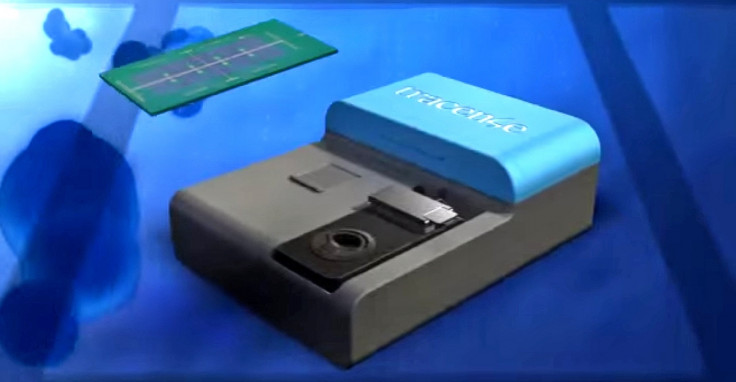Nanotech 'Nose' Sniffs Out Bombs From Five Metres Away

An Israeli start-up has developed the world's first "electronic nose" that uses super-sensitive nanotechnology sensors to sniff out bombs, and can even outperform dogs.
The Tracense bomb detecting device is designed to test for numerous substances simultaneously with a high rate of accuracy, giving results almost instantly.
"Our 'laboratory-on-a-chip' nano-sensors can detect a wide range of chemical threats, such as explosives, chemical and biological warfare agents, in air, solid and liquid samples, at extremely low concentrations, unmatched by existing technologies," Tracense CEO Dr Ricardo Osiroff told Times of Israel.
"Our system meets and beats the capabilities of dogs and other animals."
The system has been successfully tested on highly explosive materials like TNT, RDX and HMX, along with peroxide-based explosives TATP and HMTD.
Breaking down odours
Odours are a combination of several specific molecules, whereby each smell contributing to the odour gives off its own specific chemical properties.
At the moment, there are systems able to break down odours using analytical chemistry equipment, but these systems are bulky and meant to be used in a laboratory, or requiring a big sample of an odour to detect what it is.
Tracense wants its invention to be an affordable portable device that can be easily used by the police and airport security, so the chip in the device contains hundreds of tiny nano sensors capable of detecting even the most minute traces of chemicals, even as low as a few molecules per 1,000 trillion.
Using nanosensors
The technology was developed by a team of researchers headed by Professor Fernando Patolsky of the Chemistry Department and the Nanoscience Center of the Tel-Aviv University Exact Sciences Faculty, a top researcher in the field of nanotechnology who holds over 15 patents.
His research, entitled "Supersensitive fingerprinting of explosives by chemically modified nanosensors arrays" is published in the latest issue of Nature Communications.
Tracense has spent over $10 million (£5.8m) in research and development and hopes to release the bomb detection device commercially next year.
"Tracense is the first company in the world to overcome the hurdle of manufacturing a nano-sensor array with reliability, repeatability and at a reasonable cost," said Osiroff.
"Our technological achievements in the field of nanotechnology enable the fabrication of large silicon nanowire sensing arrays on a small semiconductor chip. Tracense sensors meet acute and ever-growing needs of the multibillion dollar market of threat detection for public safety, homeland security, and military uses."
© Copyright IBTimes 2025. All rights reserved.






















